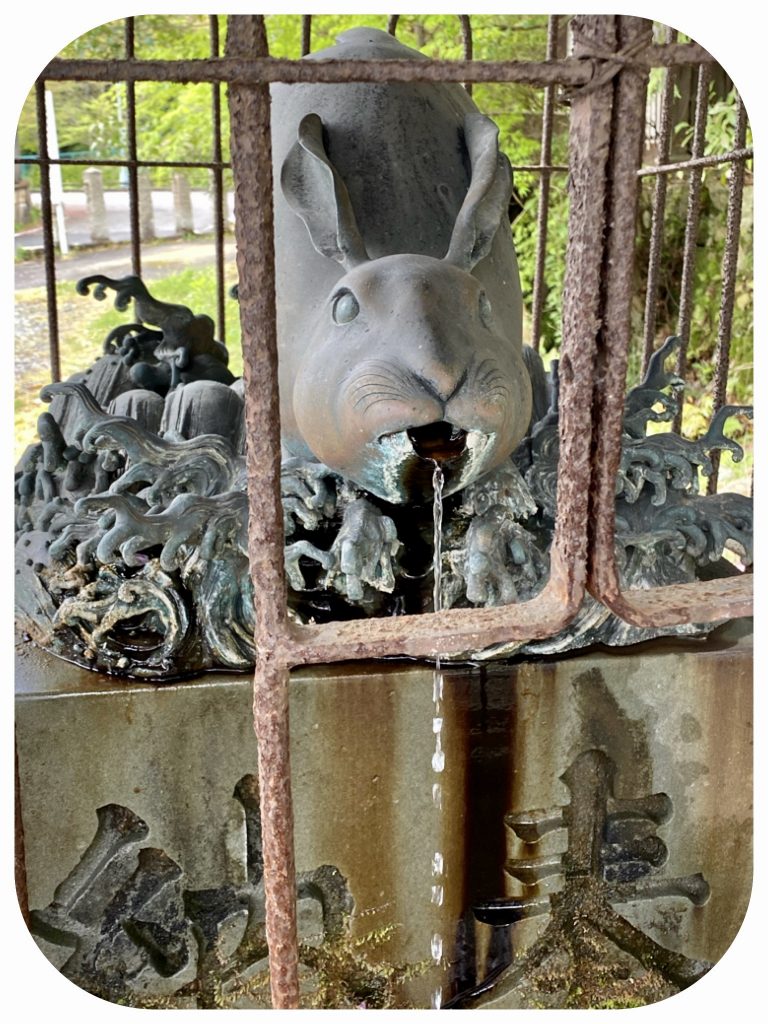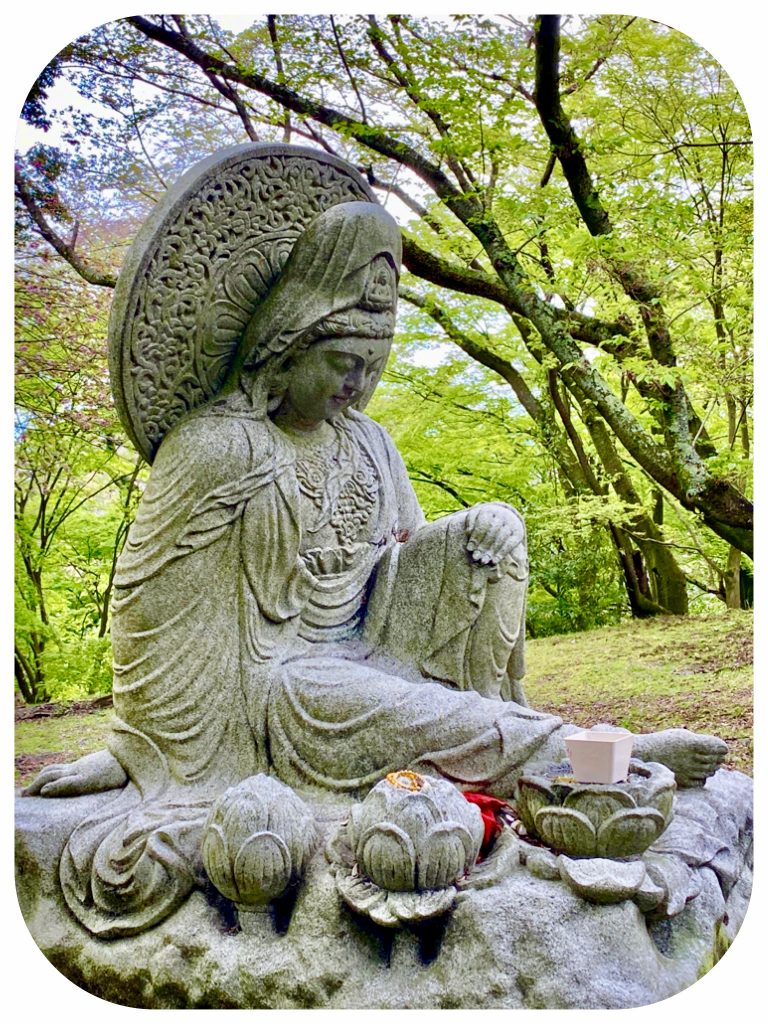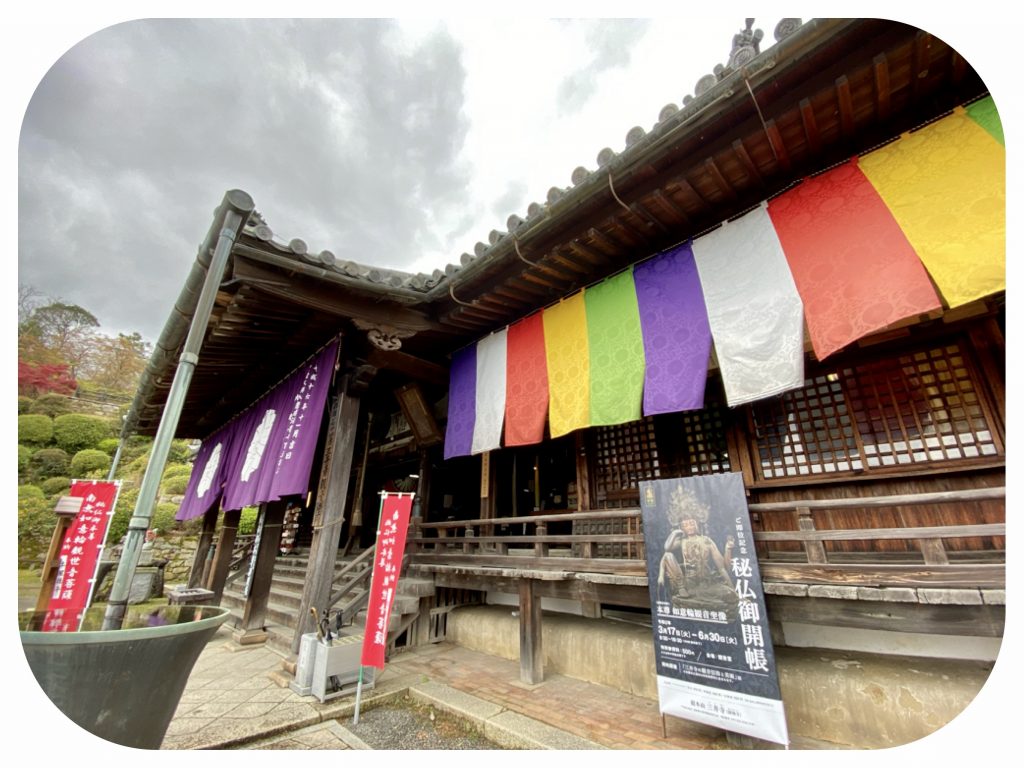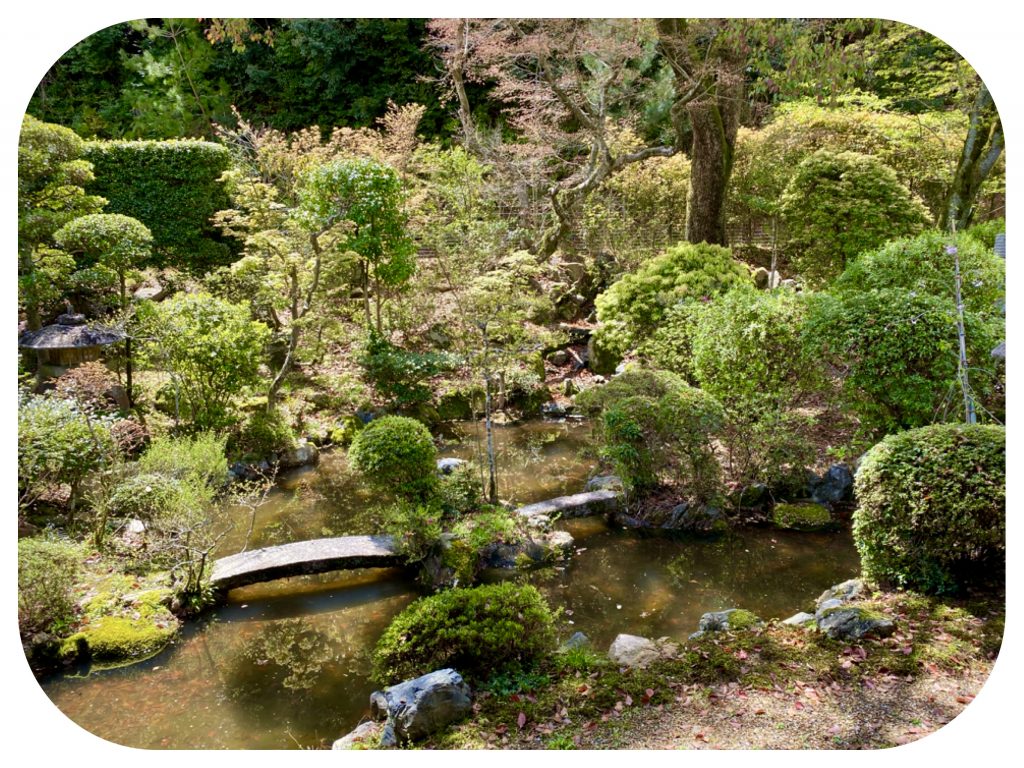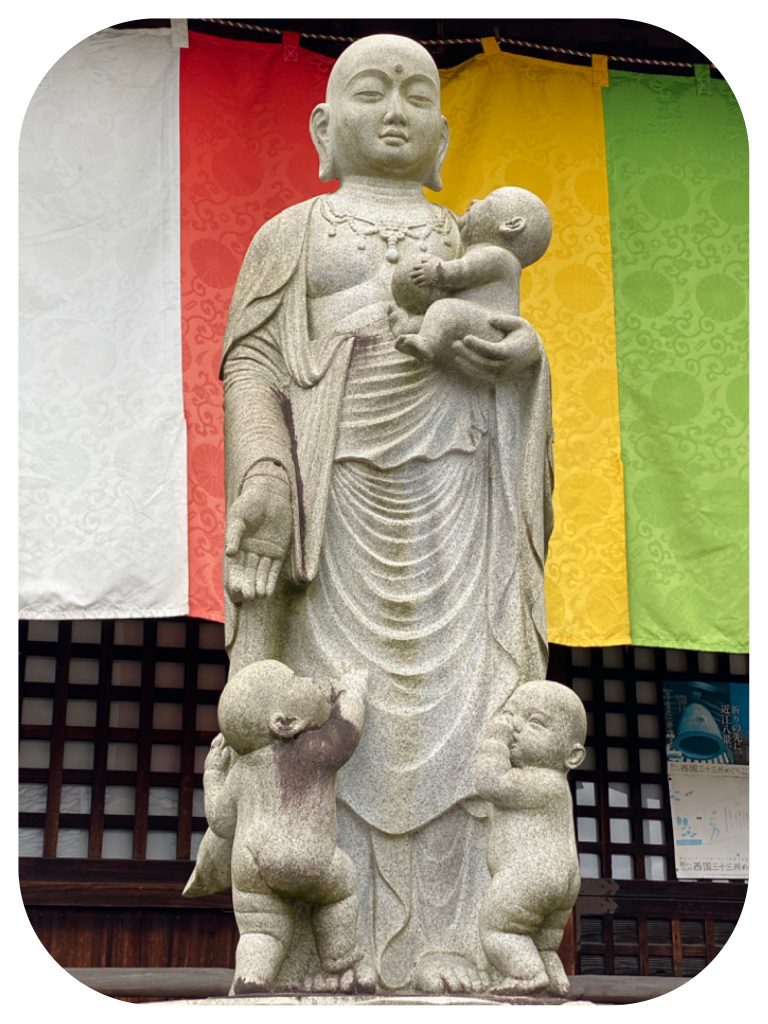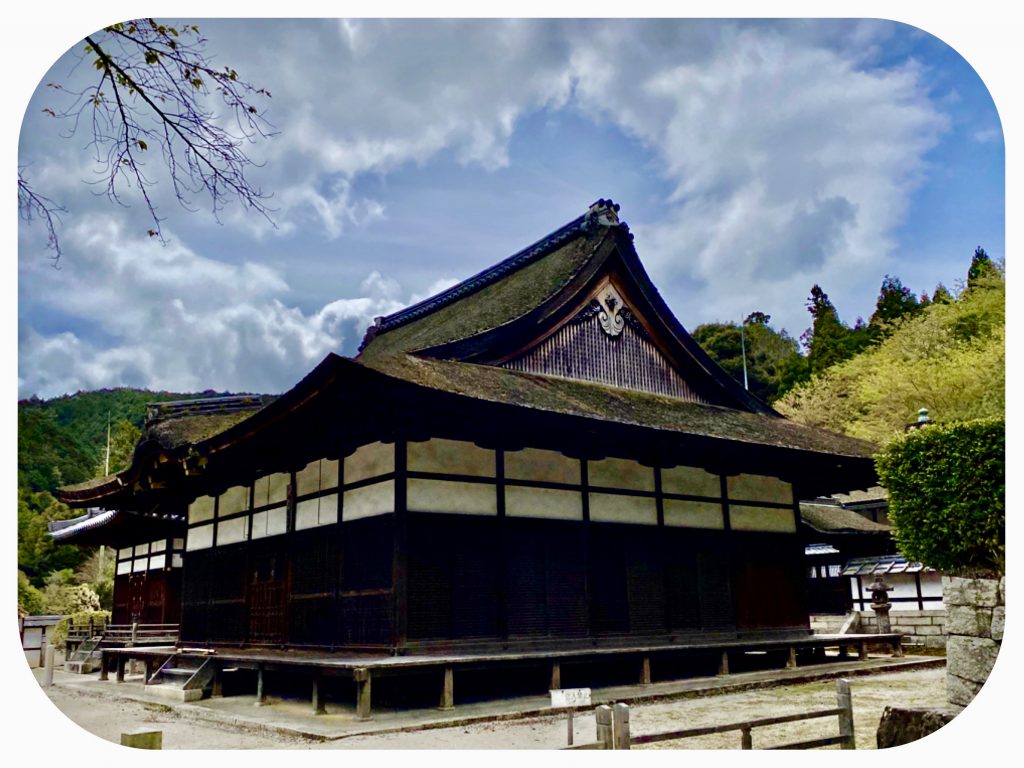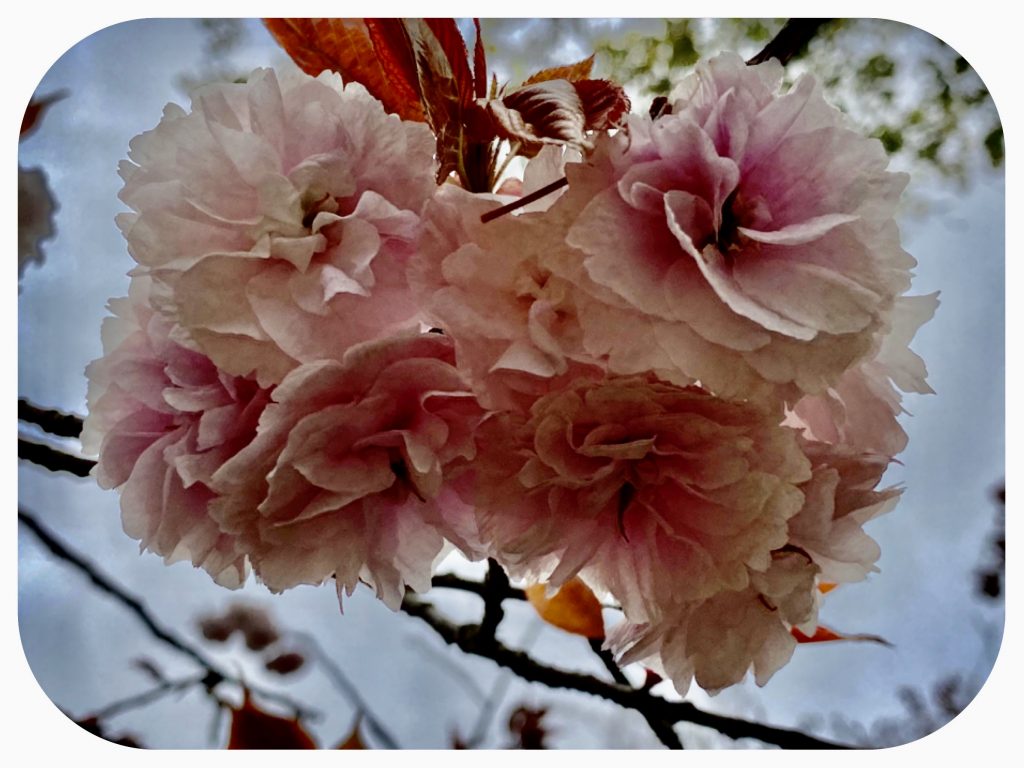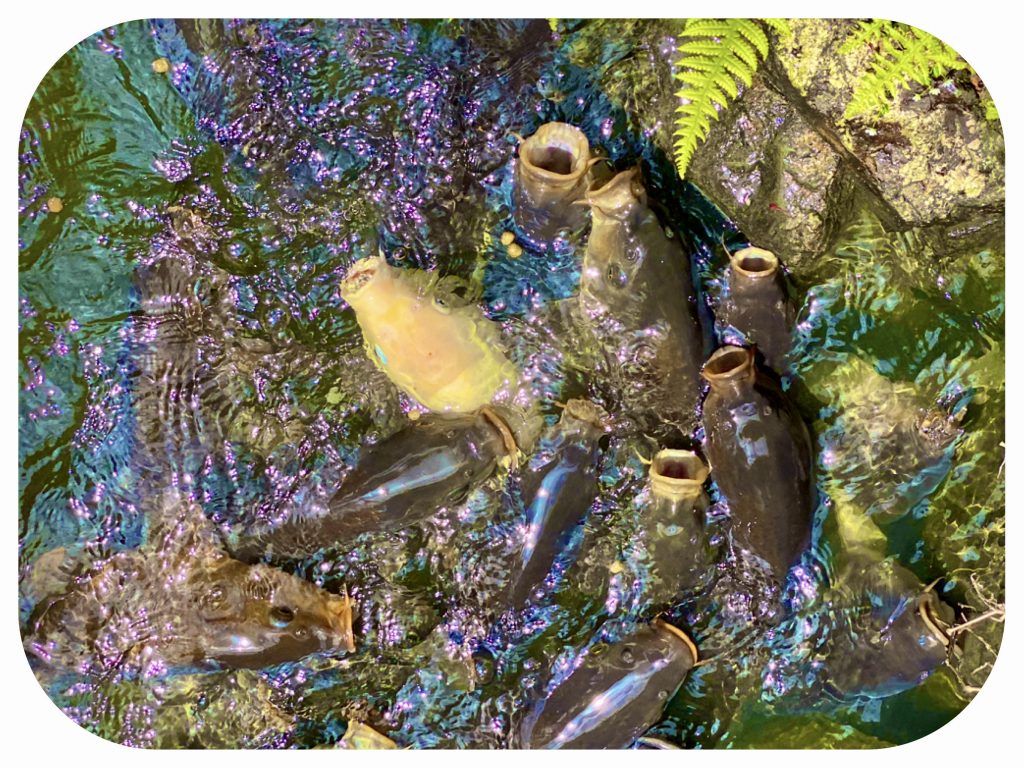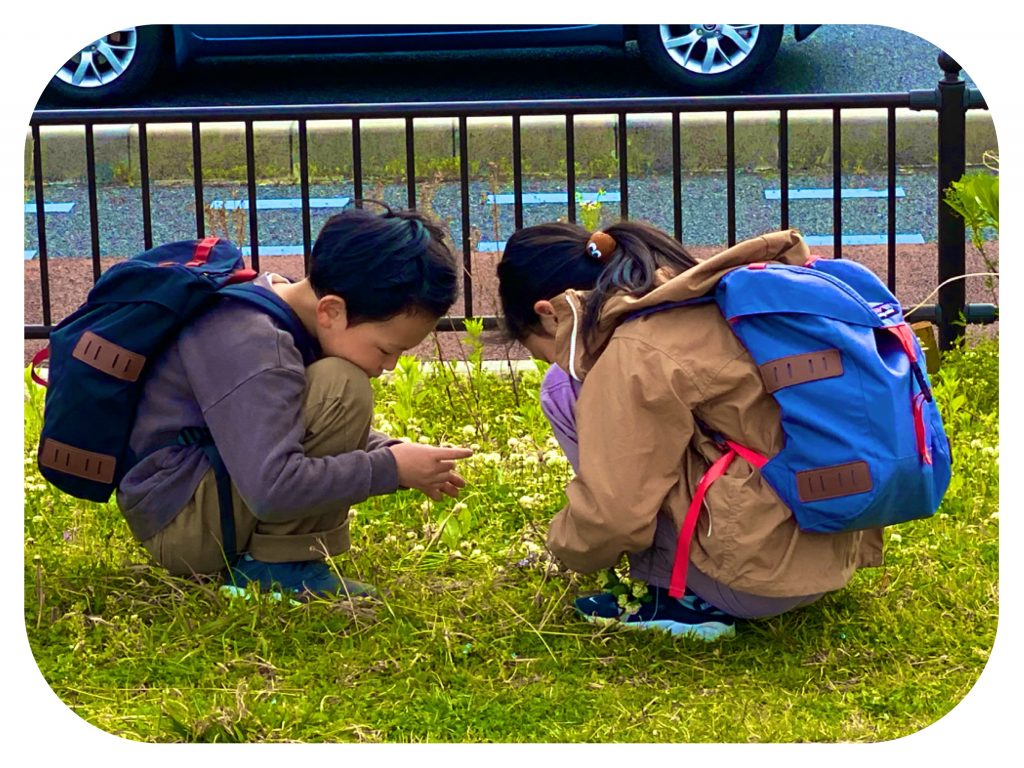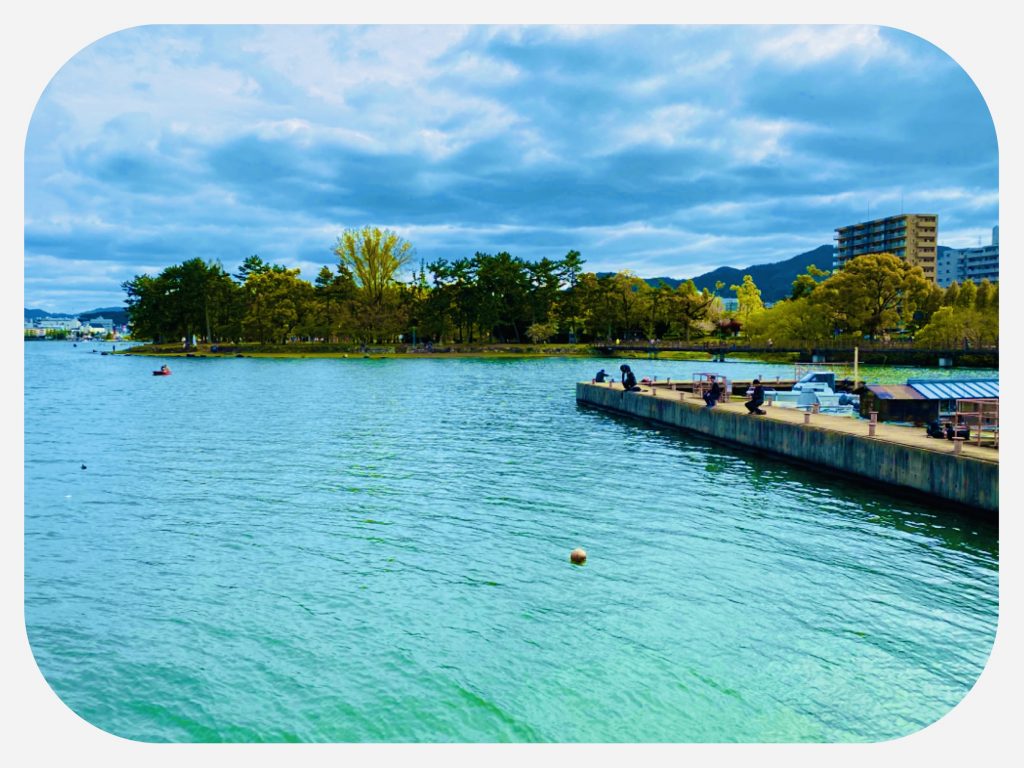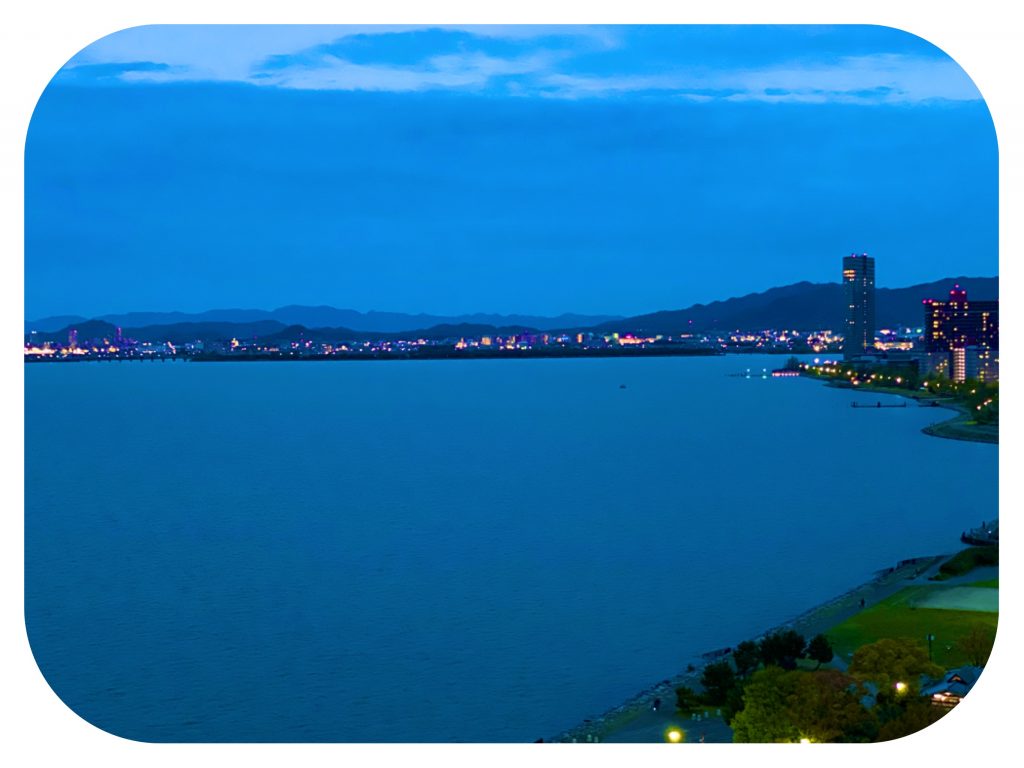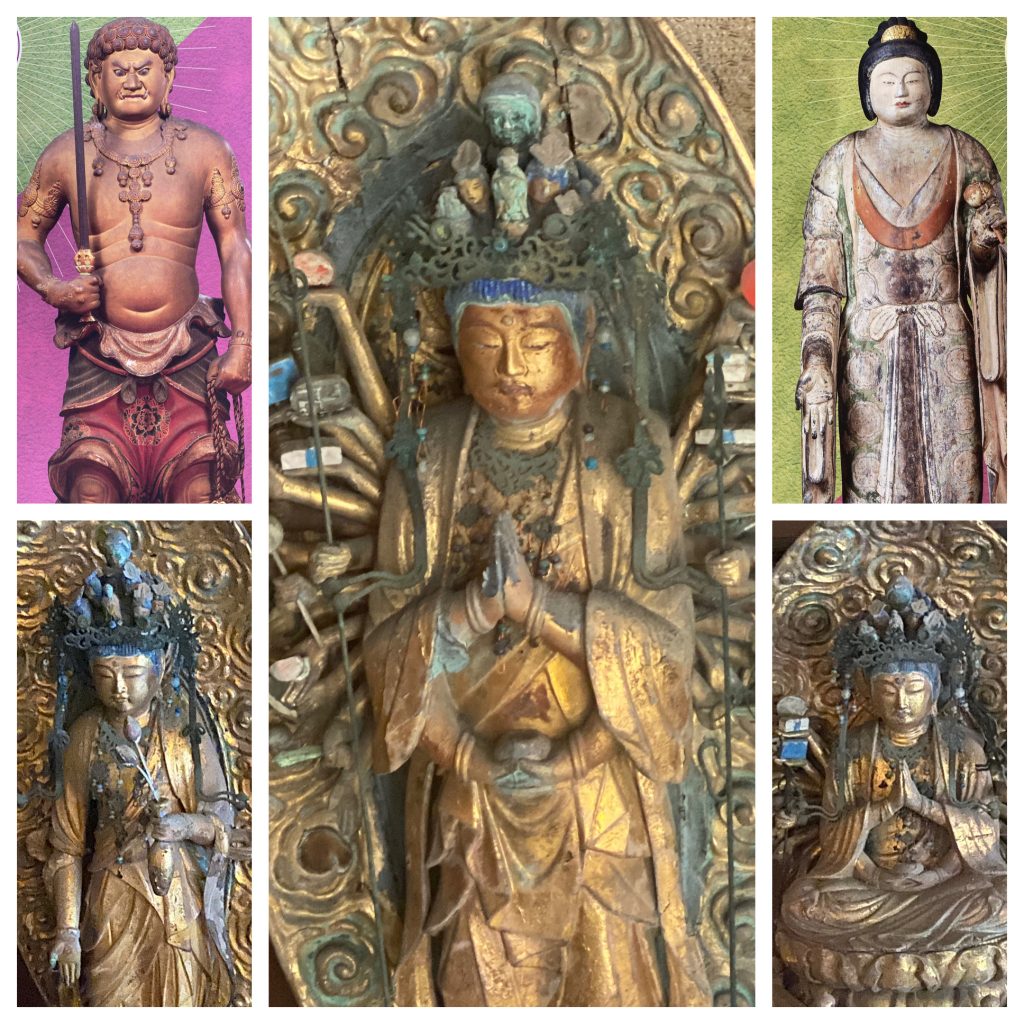Day 33 - The Road To Enlightenment - Walking The Saigoku Kannon Pilgrimage - Mii-dera, Temple #14 in Otsu, Lake Biwa, Japan
Day 33 - The Road To Enlightenment - Walking The Saigoku Kannon Pilgrimage - Mii-dera, Temple #14 in Otsu, Lake Biwa, Japan
We checked out of our hotel and left Kyoto on a Sunday morning, which usually is a quieter day of the week.
Banks and offices are usually closed, as well as government offices, road construction and many services.
But today felt especially quiet on the streets, because many other businesses were closed as well.
Places like department stores and some smaller stores, cafes and small eateries that are usually humming with activity, were mostly closed.
The government of Japan does not mandate that businesses have to close.
They can only suggest it, and they have even offered cash incentives for those who do close.
But it is a personal choice.
The hair salons that we passed were all open.
Knowing the Japanese obsession with hair, they must consider hair salons an absolutely essential service.
All the hairdressers were wearing masks.
The atmosphere in the city of Kyoto felt heavy, and this heaviness stayed with us all day long.
We even found ourselves arguing with one another more, and felt more sensitive to casual remarks, ones that we usually let slide.
The scenery got prettier as we neared Mii-dera Temple.
We walked by a narrow old canal, lined with trees.
It used to be full of boats, but nowadays all that remain are the beautiful stone gates, that once were used to regulate the boat traffic on the canal.
At Mii-dera Temple, we paid a combination entrance fee that allowed us to visit the temple and to enter the inner hall.
They were having a special exhibition of old photographs from 150 years ago, and had some amazing paintings done on wood, dating back to the 1400’s-1700’s.
The paintings were very exciting, and I regret that I cannot share them here, as photography inside the inner hall was not allowed.
The photographs showed the way Mii-dera Temple and the surrounding areas looked 150 years ago.
People were wearing period clothing, and the city of Otsu had no high rise buildings at that time.
All the houses had clay tile roofs, called Kawaramachi.
We saw the ancient Kannon deity at the main shrine, and asked permission to chant in front of it, which was granted to us warmly.
Mii-dera(三井寺,御井寺), formally called Onjō-ji (園城寺), is located in the southern foothills of Mount Hiei in the city of Otsu.
Mount Hiei is a sacred mountain that used to be the home of the Yamabushi Mountain Ascetics, who practiced a special type of mastery over the mind and body.
These mountain ascetics were called “The Marathon Monks of Mt. Hiei.”
These monks, who belonged to the sect of Tendai Buddhism, practiced unique methods on their journey to personal enlightenment.
They ran 100 day or 1,000 day consecutive marathons, (each day a distance of 40-80km) as a pilgrimage through their mountain home.
Mii-dera is a sister temple to Enryakuji Temple, which is located at the top of Mt. Hiei.
We visited Enryakuji temple complex twenty years ago, but at that time we took the cable car to the top and stayed a night in the temple lodging.
Onjō-ji was founded in the Nara Period in 672.
The name Mii-dera ("Temple of Three Water Wells") came about nearly two centuries later.
The name came because of three springs of miraculous water at the temple, which were used for the ritual bathing of newborn children.
Among the babies who were given their birth baths here, were three future emperors of Japan, Tenji, Tenmu and Jito.
Mii-dera was burned to the ground by the warrior Buddhist monks of Enryaku-ji Temple, no less than four times in the 11th century alone.
The Kondo was built in 1599, as a replacement for the original, built in 672.
Later, the great Buddhist teacher Chisho, used Mii-dera spring water to perform the Sanbu Kanjo ritual (Buddhist rite of passage during which the master figuratively “pours” his knowledge onto his student).
Chisho was born in 814 and his mother was the niece of Kukai (Kobo Daishi.)
Chisho decided during his 22-year long religious training at Mount Hiei (Kagoyama Shugyo), to devote his life to Fudo Myoo (the Buddhist deity nicknamed the “Unmovable King of Wisdom”).
Still today, an image of Fudo Myoo is enshrined at Mii-dera temple.
The temple bell, which was manufactured during the Nara period, is said to have been donated to Mii-dera temple as an expression of gratitude.
Legend has it that once upon a time, a large serpent dragon with twelve horns, laid on and blocked the Seta Bridge on Lake Biwa, disrupting all travelers.
Fujiwara no Hidesato (the hero of this story) stepped on the dragon’s back and crossed over the bridge.
That night he was visited by a young woman who proclaimed herself to be a transformation of the dragon.
In a mountain near lake Biwa, where she lived, a huge centipede had taken up residence and was devouring beasts and fish and even her own kind of dragon serpents.
Hidesato accepted her plea to fight this creature, and went to Seta.
When the centipede came sliding down the mountain, it appeared as if three thousand torches were descending the mountain.
Hidesato shot two arrows which failed to lodge.
He then licked the end of his third arrow and said a prayer.
The arrow killed the centipede and Hidesato hacked it to pieces.
The dragon woman was elated and gave Hidesato magical gifts:
An unending bolt of silk, an inexhaustible bag of rice, and a crimson copper pan of plenty, that will always be full of gold.
She also took him to the Dragon-Palace under the sea, where he was entertained and lavished with additional gifts from the Dragon King.
Hidesato was given armor, a sword, and a copper bell, which Hidesato subsequently donated to Mii-dera temple, at the foot of Mount Hiei.
In the tenth century, during a dispute which broke out between two sects of Tendai monks, Benkei (a warrior monk) stole the bell from Mii-dera and dragged it up to the summit of Mount Hiei, to Enryaku-ji temple.
There, he tried to strike it, and got really mad when he heard the bell ringing “eeno eeno,” which means “I want to go back,” even spoken in a Kansai dialect.
Benkei then rolled the bell down to the bottom of the valley.
The scars and cracks which can be seen today on the bell, are said to be the traces of this story.
In Mii-dera temple, there is a hall hosting old scrolls, with all the writings of the Pali Canon, with the Buddha’s teachings written on them.
There are about forty temple buildings, including towers and pagodas.
On one building there is a famous dragon sculpture, which is said to be the work of Jingoro Hidari.
It can be seen on the facade of the Akaiya building.
It is said that the dragon was so alive that it used to escape and fly to lake Biwa night after night, causing damage.
Being worried by his own life-like creation, Jingoro the sculptor himself drove a spike into the dragon's eyeballs, to control it.
Still today, the dragon is calmly watching over Mii-dera temple from the facade of the Akaiya building.
Outside the main hall, on a vast deck overlooking the city of Otsu, we sat to eat in a small cafe.
The woman running the shop turned on the space heater for us and Jules had tea with Warabi Mochi, while I ate a bowl of Oden.
An Oden is a collection of root vegetables, konyaku and tofu cake with an egg, all cooked together in a hot broth.
I was hungry, because all we had eaten for breakfast was a banana and a shared orange, since we wanted to start the day early.
We passed by a temple pond full of carp.
The carp were so hungry because there were very few visitors who bought fish food to feed them.
They stuck their open mouths out of the water, and jumped over each other to grab my attention.
We bought the only two packets of fish food in the stand near the pond, and fed them.
After we finished our visit to the temple, we walked farther, to cover more distance towards our walk to Hikone.
People were out in the park by Lake Biwa.
Families were out walking, men were fishing, people were fishing and boating, kids were picking wildflowers, and teenagers were riding skateboards and practicing jumps from stairs.
Life felt almost normal, if we ignored the commercial district with its closed malls.
We stopped at a German restaurant in the park, to eat an early dinner.
It was interesting to see a building with german alpine architecture at the edge of the park. More importantly, it was open!
We stepped in and had a very lovely meal set that included an onion soup, a salad with smoked salmon and herbs, a slice of fish in a mustard sauce, herbal tea and a yummy dessert sampler plate.
We continued walking from there through the suburban sprawl until early evening, and then took the train back to Otsu to check into our hotel.
From outside, our hotel looked like a huge cruise ship, complete with circular ship windows overlooking vast Biwa Lake.
They had already emailed us that they would be open, but would refuse to check in guests who had body temperatures of 37.5 degrees Celsius or more.
I was afraid that we might be overheated from our walk, and asked Jules if he is cool.
He put his hand to his forehead and said in a Jamaican accent: “I be cool baby, don’t you worry about me!”
But we encountered nothing but kindness inside.
The two front desk people who checked us in, did not take out their temperature gun and aim it at our foreheads.
They upgraded our room to a more spacious one and explained about the set breakfast and Onsen hot spring.
I felt so much better.
The onsen was lovely, with hot soft water, and our room was super clean and almost new with big clean beds.
The hotel has some guests, and does not feel like staying in a ghost town, even though it is huge and some of its restaurants, like the buffet-style and the french restaurant, are closed.
It will be a good base from which to walk towards our next two temples and walk forwards towards Hikone.
Wishing you blessings and much love,
Tali and Jules
Daily stats:
Steps walked - 31,048
23 km. walked
Active walking time - 5.5 hours
Total walking time today - 8 hours.
Total walking distance on the Saigoku to date - 638 km
Temple Visited:
Mini-dera, Temple #14, in Otsu Shiga


